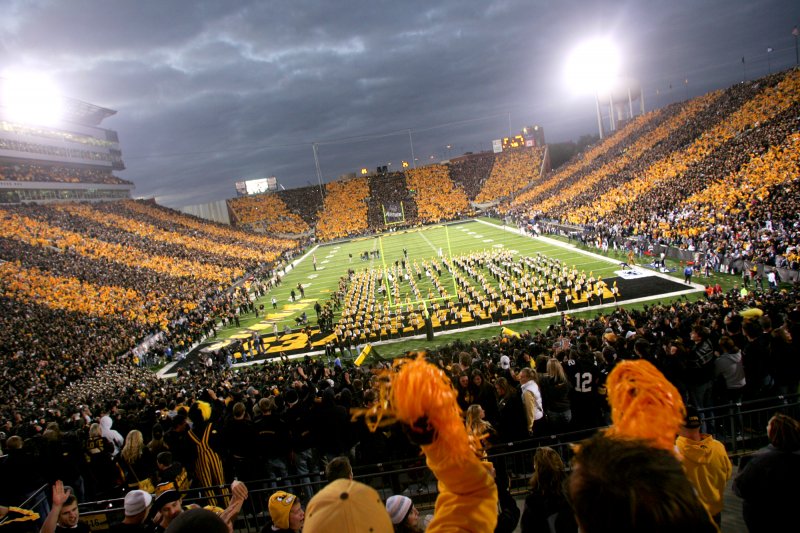 Reading Time: 4 minutes
Reading Time: 4 minutesLet’s say you hired the Rolling Stones to play at your wedding. Imagine people’s reactions…
“The Rolling Stones? As in Mick Jagger?” they would ask in disbelief.
“Hell yes, I hired Mick Jagger!” you would say. “After all, it’s the most important day of my life. Hey, you’re coming, right? You better be there!”
The RSVP’s would come rolling in.
(Hah! See what I did there?)
Now contrast this to the person who downplays his or her wedding.
“It’s no big deal. We’ve been together for ten years, so we are basically already married for all intents and purposes. Now we just need the piece of paper. Show up if you can, but don’t sweat it.”
Turnout would be pretty dismal if this were your attitude.
The events in your life become important to other people because you say so.
In the same vein, hosting an event by joining the Whole Life Challenge turns the ordinary act of exercising into something extraordinary.
I learned this over a decade ago when I hosted something called the Petranek Fitness Challenge. The PFC consisted of ten individual events, and the winner was the person who improved the most over the course of eight weeks.
I knew that most of my clients would never run a marathon or compete in the CrossFit Games. The PFC was their event. It gave them a reason to show up—and show up big—for eight weeks. Every trainer, coach and gym owner wants people who are engaged, and by distinguishing those eight weeks over any other eight weeks, I gave people a context for immersing themselves into my gym and their training.
Participants talked strategy, practiced events together, and cheered each other on. And they started leaning on each other in ways I never predicted.
Those eight weeks—those otherwise ordinary eight weeks—began counting for something more. My students upgraded their memberships, showed up for different classes, started paying attention to technique and pacing, and started asking me for advice on nutrition.
We used the Fight Gone Bad fundraiser the same way. We took a normal, ordinary WOD and turned it into a significant event. For six or seven weeks leading up to the day of the fundraiser, we held “Fight Gone Bad Fridays” where any member of the community—student or not—could come into the gym and practice Fight Gone Bad. All of our students—and many of their friends and family members—knew we were training for Fight Gone Bad.
On the day of the fundraiser, people showed up prepared to complete a WOD that they had been preparing for.
Only this time, it had meaning. It had meaning because we told them that it did. We gave the workout significance, and we prepared them to compete at their top level of performance.
The CFLA community was the top fundraiser globally for four or five years of the fundraiser’s six-year lifespan—and all people did was show up and complete a WOD.
We also grew our community. For every one person who attended, three or four showed up to watch. We hired a DJ (who played the Rolling Stones) and a food truck. We declared it a major event, and people noticed.
The Whole Life Challenge does the same thing for a gym. Not only do boxes who join build stickier bonds with their students, but they also expand their sphere of influence. It starts with a buzz inside the gym, and it grows and grows to include students’ families, friends, and coworkers, all of whom hear about you gym and are invited to join your WLC team.
When your student’s best friend, co-workers, and her fiancé join the Whole Life Challenge, you are building members of your team. Over the course of the WLC, these represent your opportunity to broaden your sphere of influence and maybe even find new members for your community. These “friends” of members are the brand new people who come to your “Prelims” event, interact with your team, get a flavor for your community, and receive the benefits of your coaching of your team (group and personal emails or phone calls).
You will also notice that the conversations you have with your students begin to change as you start focusing on your students’ whole lives. You are seen as an expert not just inside the gym, but also in nutrition, happiness, and well being.
We notice that our students are quieter, better listeners during the Whole Life Challenge. They are more receptive to coaching, and they are more respectful of our coaches. After all, they have a purpose for interacting with us, above and beyond just taking a single class at the gym.
And, like I said, when your student’s fiancé, co-workers, and best friend join your Whole Life Challenge, you are able to showcase your services to a bigger group of people—people who become your future students.






